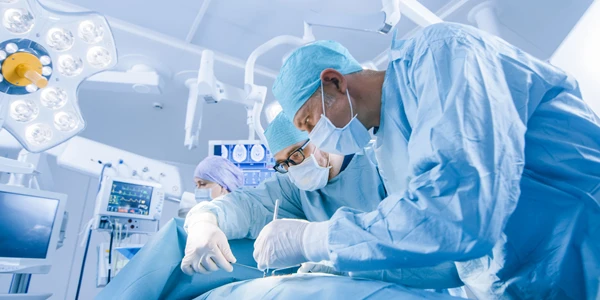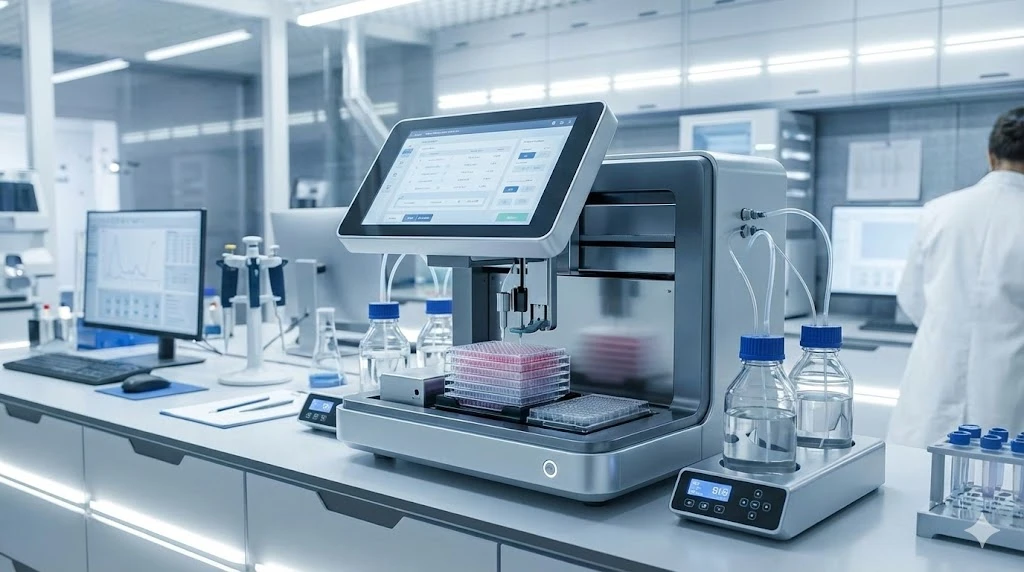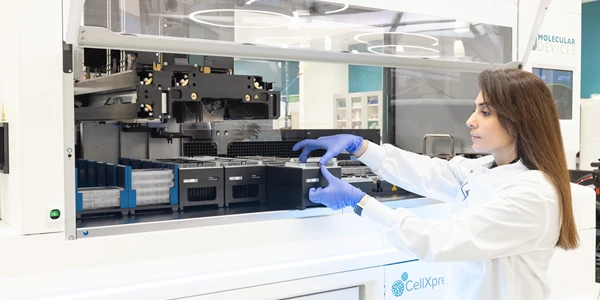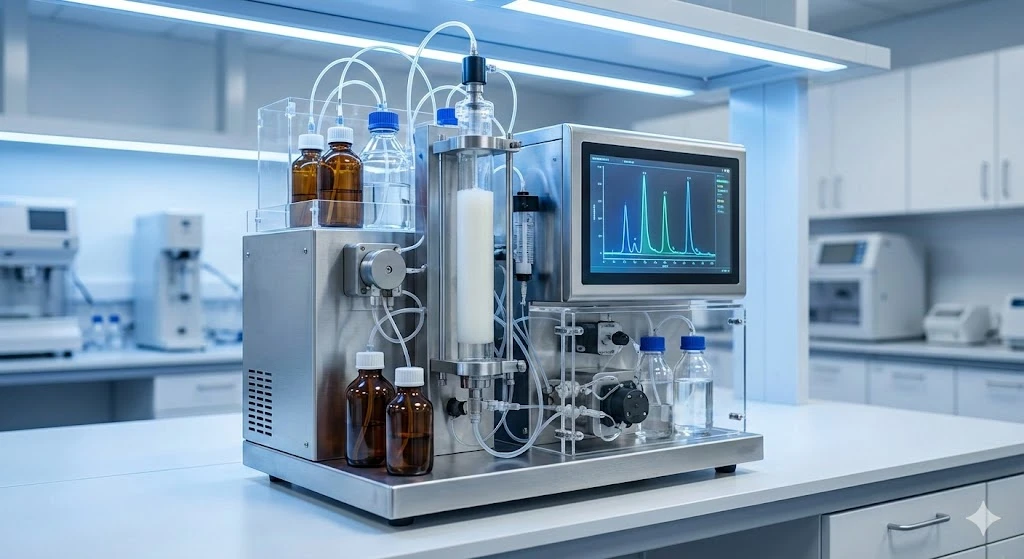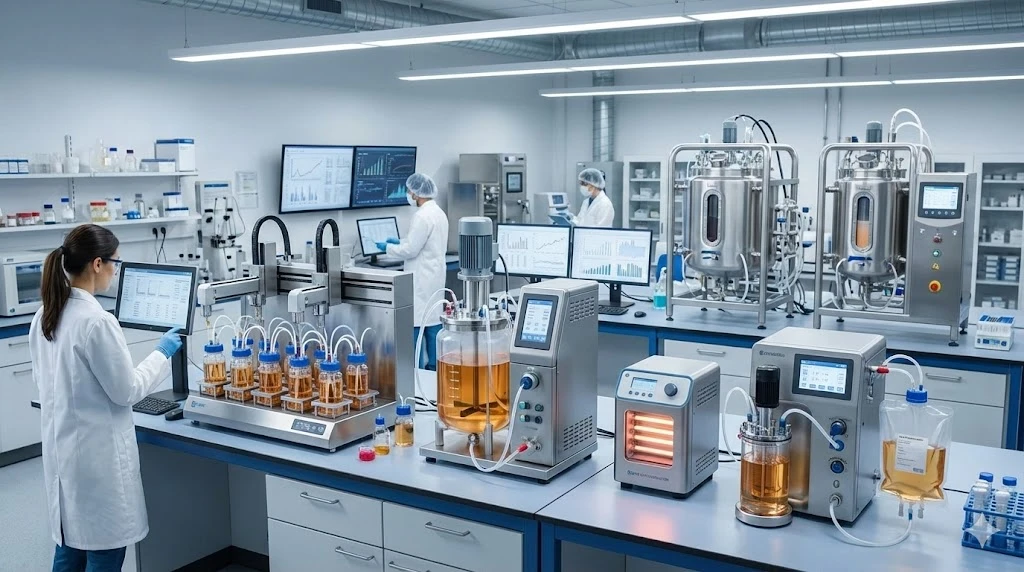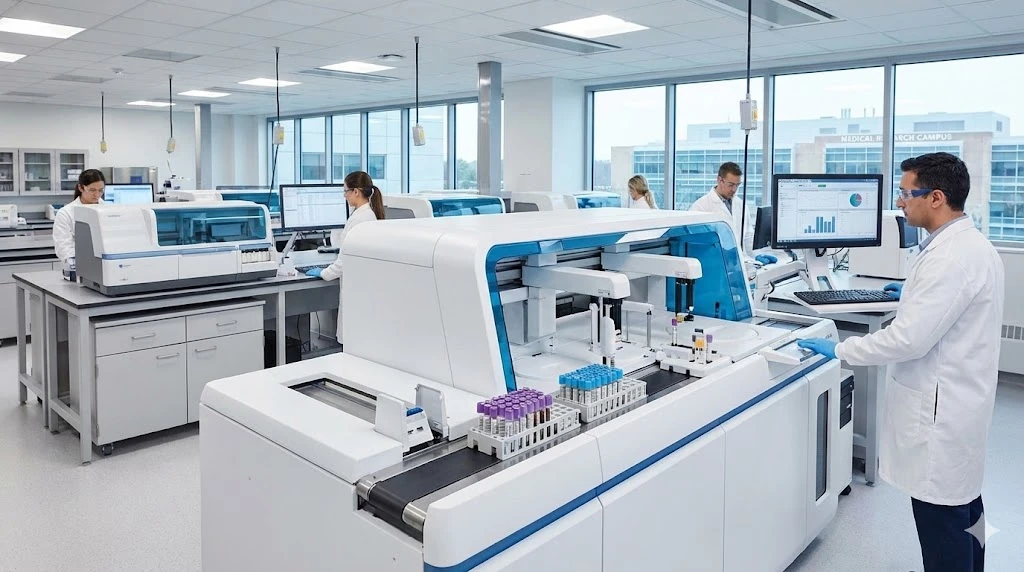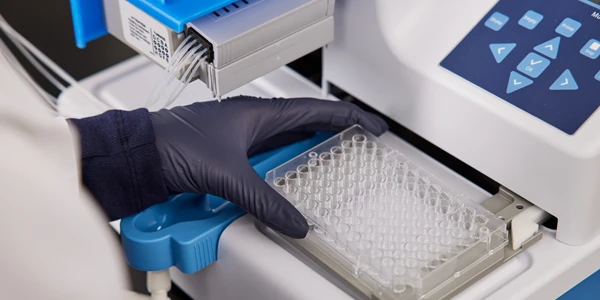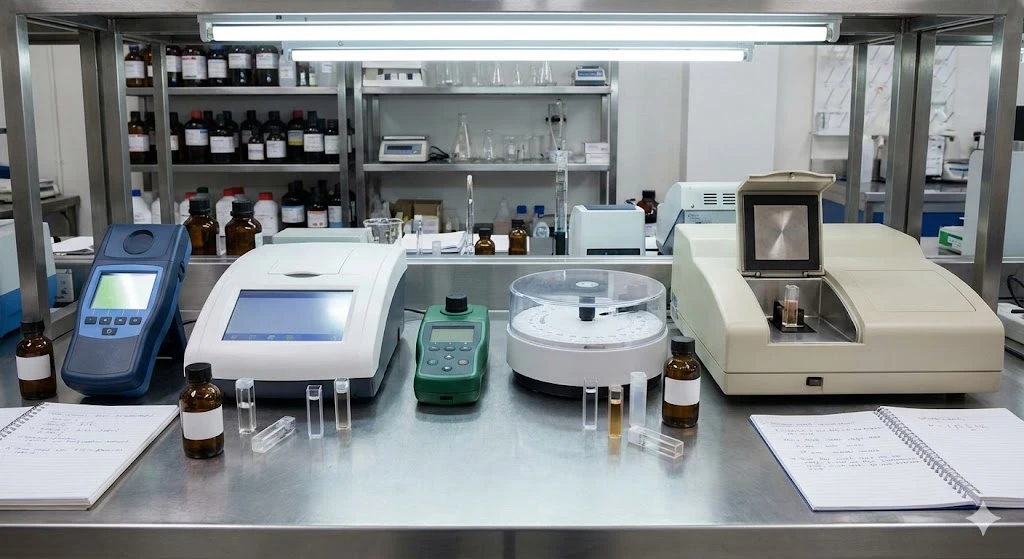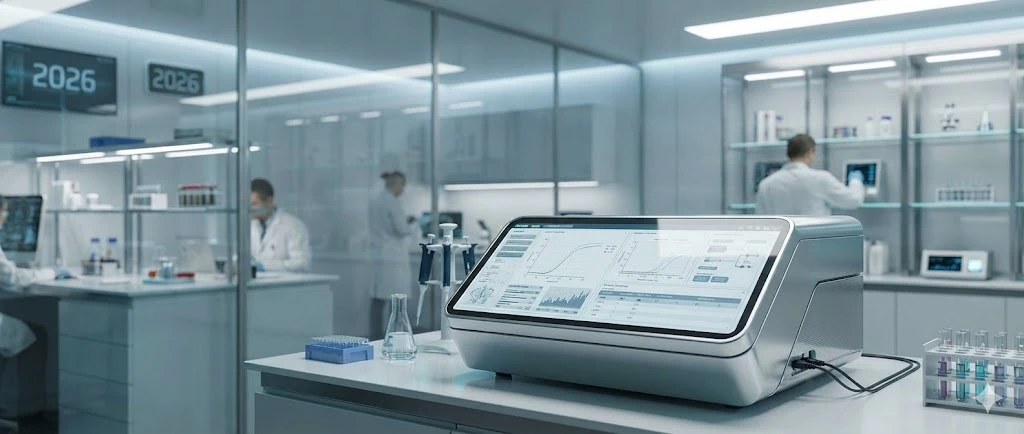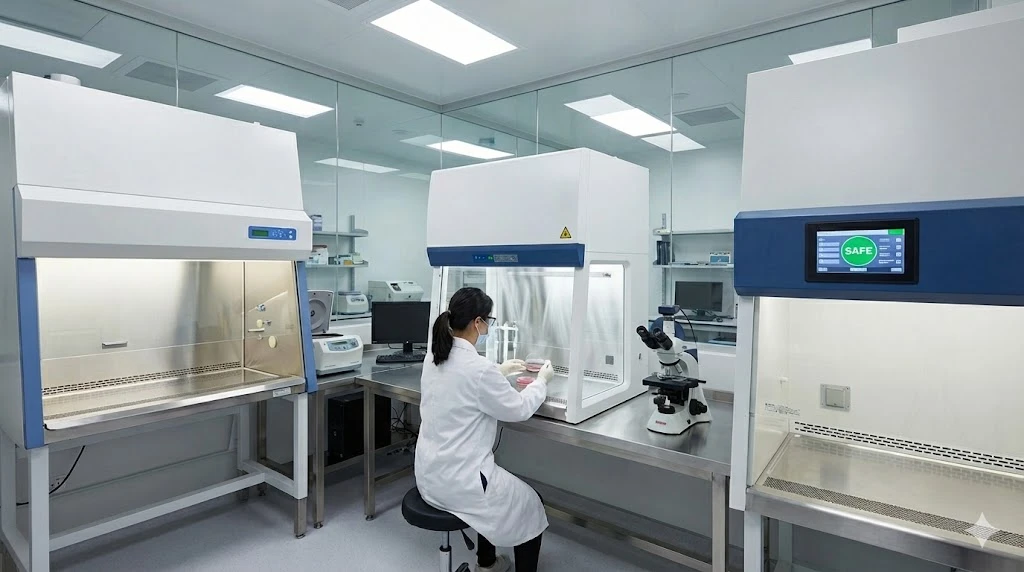ASMS 2020 Digital Conference Reboot: A LabX Review
The 2020 annual meeting of the American Society of Mass Spectrometry (ASMS) was shifted to a purely digital virtual show.
This virtual "reboot" format made for an outstanding experience, rich with interactive, on-demand, and downloadable content. Virtual press conferences added an extra level of buzz to the digital atmosphere. Here are a few of the many notable developments.
Bruker introduced a new breakthrough MALDI-2 source on the timsTOF flex SpatialOMx platform.
As a leading force in the field of Mass Spectrometry Imaging (MSI), Bruker has pioneered multiple instrument and software innovations over the past several decades.
- In MALDI imaging, spectra are collected spatially, creating a mass spectrum at every location within a sample. These label-free datasets, and the 2D maps they enable, have emerged as essential tools for molecular discovery and compound distribution studies within samples and tissues. Launch of the timsTOF fleX instrument at ASMS 2019 enhanced spatial resolution capabilities down to 20 µm.
- Bruker’s concept of SpatialOMx is the combination of using MALDI Imaging and ESI (electrospray ionization) to enable high-resolution distribution of target compounds. The timsTOF fleX MALDI source is used to map the distribution of molecules in samples and to identify regions of interest. Upon extracting and preparing the sample for LC-MS, the ESI source is then used for the highest level of molecule identifications.

The launch of MALDI-2 in the timsTOF fleX this year represents a step forward in resolving compound classes not readily apparent by standard MALDI imaging.
- The MALDI-2 uses laser post-ionization to enhance and enrich the data, leading to significant boosts in ion yields and prevention of ion suppression.
- The initial MALDI laser hits the sample surface and desorbs material, generating the first batch of ions and neutral molecules.
- A second laser then intercepts the evolving plume and ionizes neutral molecules, thereby enhancing the ion yield.
- The result is more complex individual datasets, which equates to more comprehensive feature mapping.
Applications include drug distribution studies in brain, liver compound toxicity, chemotherapeutic penetrance in multiple tissues, and other important areas.
SCIEX announced the launch and validation of the Echo MS System for Acoustic Ejection Mass Spectrometry applications.
The use of high-performance liquid chromatography (HPLC) in line with mass spectrometry has traditionally been the gold standard for quantitative MS. Electrospray ionization (ESI) is the most commonly used ionization technique used with LC-MS due to its broad compound coverage and ionization efficiency when compared to other approaches like atmospheric pressure chemical ionization (APCI) or matrix assisted laser desorption ionization (MALDI).
The newly developed Acoustic Ejection Mass Spectrometry (AEMS) platform - the SCIEX Echo MS System – enables rapid, chromatography-free MS/MS analysis.
- The technology begins with the concept of acoustic droplet ejection – the use of acoustic energy to generate extremely well-defined volumetric droplets.
- An Open Port Interface (OPI) allows the capture and transfer of the acoustically ejected droplet to the electrospray source of the mass spectrometer.
- The liquid droplet stream is then vaporized and ionized compounds are specifically quantified using the SCIEX Triple Quad 6500+ System.
- Fitted with the OptiFlow Source and the specially developed transfer line from the OPI, this MS detector is ideally suited for the Echo MS System for high-throughput, quantitative work.

Introduced in concept at ASMS 2019, the Echo System has now been validated in a number of high-throughput contexts:
- Quantitative ESI MS/MS analysis speed is now much closer to that of a plate reader
- The ease of method development, the ability to monitor multiple analytes simultaneously, specificity, and dynamic range of mass spectrometry are retained in the Echo system.
- The system demonstrates excellent reproducibility of ejection (with 1.98 %CV across all 384-well plate)
- Designed for a high-throughput environment, the sample plate holder is positioned in such a way that standard robot arms can transfer plates to and from it easily. The open API allows scheduling software to control the system without the need for human intervention.
- Data processing and export can also be automated. After data for the plate are acquired, they are processed using a quantification method. A .csv file is automatically generated, with information including well number, peak area and sample name, which can be imported by a LIMS.
Agilent debuted several new instruments for high-throughput processes, regulated environments, and clinical laboratory applications.

The RapidFire 400 High-throughput LC-MS system enables ultra-high speed sample processing, with injections every 8 seconds. Temperature controlled sample storage assists quality control. The 1536 plate format provides for greater capacity while the smaller footprint is optimized to accommodate the Ultivo LC/TQ MS detector. Applications include pharma/biopharma, life science research, forensic toxicology and other areas in which speed is a critical factor in performance.
The new 6470B Triple Quadrupole LC-MS is a remarkably versatile and robust system. Ion injector capillary maintenance is cut from 6 hours to 30 min owing to the new VacShield feature. The resulting improved instrument uptime combined with extended quantitative performance are attributes well-suited for food safety analysis, environmental testing, pharma research, and other areas.
The Agilent OpenLab data processing software provides safe solutions that meet regulatory requirements, while protecting intellectual property and risks from fraud.
Agilent has announced the launch of the new Class I system in the US with Infinity II Clinical Edition/ K6460S system for Lab Developed Tests (LDTs). The clinical diagnostic landscape represents a promising market for mass spec technology, where operators require ease-of-use and robust instrumentation. The all-inclusive fully validated K6460S Class I medical device includes the Agilent 1260 Infinity II LC System Clinical Edition, the K6460 triple quadrupole MS system, and the MassHunter Clinical Edition software workstation. The system is the next-generation Agilent Clinical Edition triple quadrupole LC/MS system for in vitro diagnostic labs governed by US FDA regulations.
Shimadzu introduced the LCMS-8060NX triple quadrupole liquid chromatograph mass spectrometer (LC-MS/MS) this year.
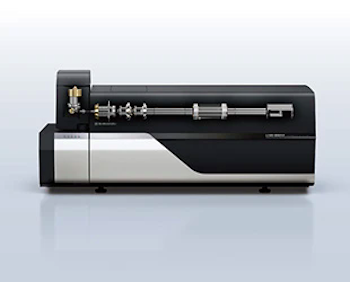
- Newly developed ion focus lenses in the state-of-the-art integrated electrospray probe propel ions into the LCMS-8060NX with the greatest of efficiency.
- The LCMS-8060NX employs new ion guides, the UF-Qarray II and the UF-Lens II, to increase robustness while maintaining high ion transmission efficiency.
- Further maximizing productivity, consumable parts like the ESI spray needle and the inlet desolvation line (DL) can be changed quickly and easily without breaking vacuum.
- Designed for easy operation, the LCMS-8060NX incorporates optimized parameters based on AI research that enable high sensitivity without manual optimization. Features such as automated start-up and shutdown (with LabSolutions Connect MRM) enable unattended operation.
To complement the LCMS-8060NX, Shimadzu also introduced updated LabSolutions LCMS workstation software for total operator support, from analysis to data processing.
View Mass Spectrometer Listings on LabX.com
View Liquid Chromatography Listings on LabX.com
